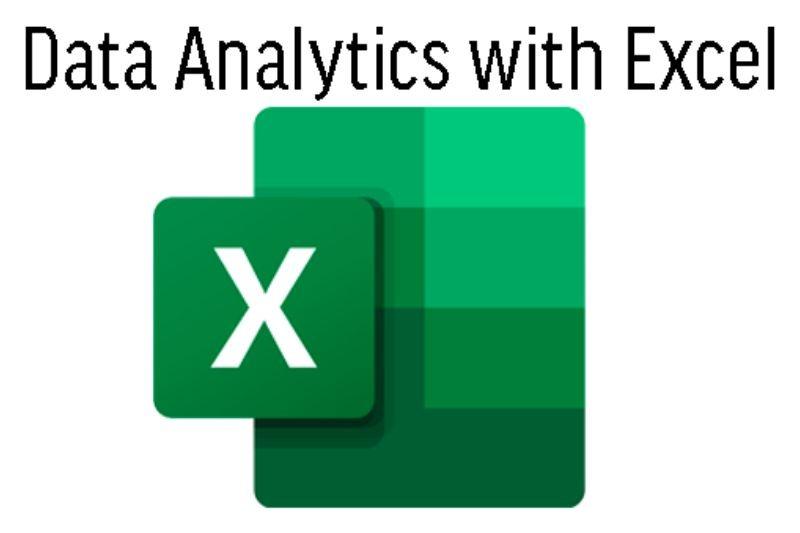In today’s data-driven world, proficiency in Microsoft Excel is highly sought-after. While most individuals have a basic understanding of Excel, taking your Excel skills to the next level can open up a world of possibilities. This is where an Advanced Excel course comes into play. An Advanced Excel course is designed to equip you with the knowledge and skills needed to unleash the full potential of Excel for data analysis, reporting, and decision-making. Whether you are a business professional, analyst, data enthusiast, or student, this course can provide a competitive edge and enhance your productivity. Read the following article curated by Neon Police to learn about the advanced excel course. Also, get an insight into the best certification for excel and get the details of the best excel course for data analysis.
The list of the key learning objectives
The Advanced Excel course dives deeper into Excel’s advanced features and functionalities, exploring topics beyond basic formulas and functions. It covers various techniques and tools that enable you to manipulate and analyze complex data sets, automate tasks, create insightful visualizations, and generate professional reports. The primary goal of the Advanced Excel course is to help you become proficient in advanced data analysis and reporting. By the end of the course, you can expect to:
The primary goal of the Advanced Excel course is to help you become proficient in advanced data analysis and reporting. By the end of the course, you can expect to:
1. Master Advanced Formulas and Functions
Learn to leverage complex formulas and functions to perform advanced calculations, handle large datasets, and solve complex business problems. Explore functions like VLOOKUP, INDEX-MATCH, SUMIFS, COUNTIFS, and more.
2. Utilize Data Analysis Tools
Discover powerful data analysis tools and techniques like PivotTables, Power Query, and Power Pivot. Uncover hidden patterns, summarize data, perform advanced data cleansing, and create interactive dashboards.
3. Automate Tasks with Macros
Automate repetitive tasks by recording and executing macros. Streamline your workflows, create custom functions, and save valuable data processing and reporting time.
4. Create Advanced Charts and Visualizations
Learn to create visually appealing charts and graphs, effectively communicating your data insights. Explore advanced charting techniques, including waterfall, sparklines, and dynamic charts.
5. Work with What-If Analysis
Explore scenarios and perform what-if analysis to simulate business scenarios, assess risks, and make informed decisions. Use tools like Data Tables, Goal Seek, and Solver to analyze the impact of changing variables.
6. Generate Professional Reports
Develop skills to present your data effectively through professional reports and dashboards. Learn formatting techniques, conditional formatting, data validation, and best practices for creating visually appealing reports.
7. Course Delivery
The course delivery can vary depending on the platform or institution offering it. It may include a combination of video tutorials, hands-on exercises, quizzes, and projects to reinforce your learning. Some courses may also provide downloadable resources, cheat sheets, and access to a community or instructor support for additional guidance.
Who can benefit from the course:
The Advanced Excel course is suitable for a wide range of individuals:
- Business Professionals: Enhance your analytical capabilities, streamline data-related tasks, and generate meaningful insights to support decision-making.
- Analysts: Acquire advanced data analysis skills to extract actionable insights from complex datasets, perform forecasting, and conduct in-depth data exploration.
- Data Enthusiasts: Deepen your understanding of Excel’s advanced features and unlock its full potential for data manipulation, analysis, and visualization.
- Students: Gain a competitive advantage by developing advanced Excel skills highly valued in internships, projects, and future careers.
Conclusion
Investing your time and effort in an Advanced Excel course can significantly enhance your Excel skills and empower you to work with data more efficiently and effectively. With advanced data analysis and reporting capabilities, you can uncover valuable insights, make data-driven decisions, and present information clearly and concisely. Whether you aim to excel in your professional career, upgrade your analytical skills, or simply gain a deeper understanding of Excel’s advanced features, an Advanced Excel course is a valuable investment. It equips you with the necessary tools and techniques to handle complex data sets, automate tasks, and create visually compelling reports. By acquiring advanced Excel skills, you can improve your productivity and efficiency in various professional roles. You’ll easily tackle complex data analysis projects, saving time and effort in data manipulation and reporting. Employers across industries value professionals who can harness the power of Excel for data-driven decision-making, making you a valuable asset in today’s competitive job market.
Furthermore, an Advanced Excel course opens up opportunities for career advancement. As organizations increasingly rely on data to drive their operations, individuals with advanced Excel skills are in high demand. Whether you aspire to become a data analyst, financial analyst, marketing analyst, or any other role that involves working with data, mastering Excel will give you a competitive edge and help you stand out among your peers. For more information, visit Datacamp and the official website of Neon Police.
FAQ’s





